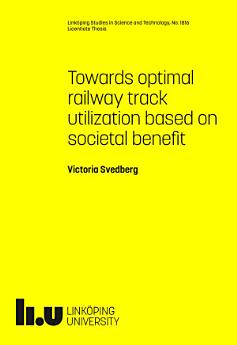Towards optimal railway track utilization based on societal benefit
About this ebook
To allocate track capacity such that the track utilization is optimal would be an easy task if the track capacity were not a scarce resource. Today, many train operators share railway network and there are cases when two or more operators want to use the same track capacity at the same time. The infrastructure manager must then make priorities and reject some operators, and the question is which operators to reject. The guiding principle is to grant the operators that provide the highest societal bene?t access to the tracks. However, the question would then change into how to know which operator that provides the highest societal bene?t.
In this thesis, the societal bene?t of publicly subsidized tra?c is estimated using social cost-bene?t analysis. Mathematical models and methods are developed for quantifying and computing the number of departures for the publicly subsidized tra?c and their distribution in time, i.e. a train timetable, that provides the maximal societal bene?t in a social cost-bene?t analysis setting. The societal bene?t of commercial tra?c is estimated using the market value for their requested train timetables. The market value is set using dynamic pricing. A suggestion of a dynamic pricing process that can be used in the train timetabling process is described. Mathematical models and methods for calculating the supply and demand of a track access request are developed and tested, which enables the use of a dynamic pricing process on track capacity








